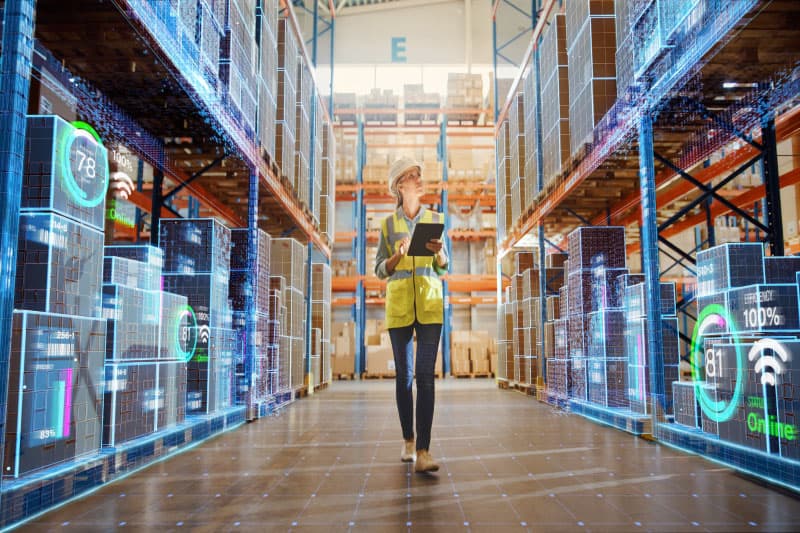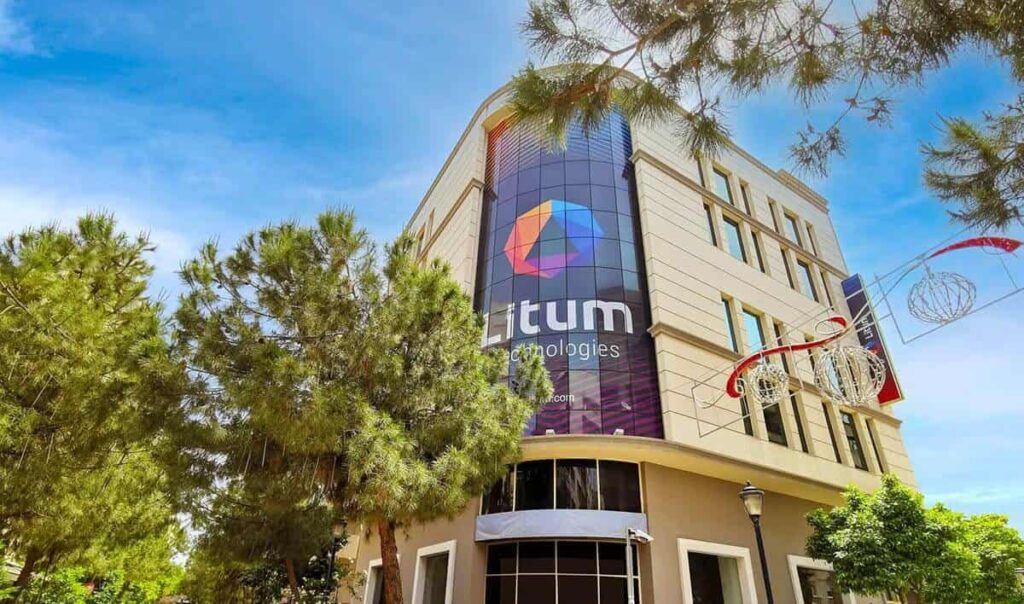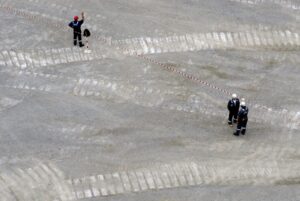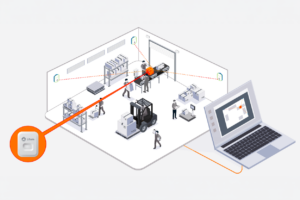Contents
Facts about RFID technology and Real Time Location System
Have you heard about active RFID technology? How about real-time location systems or RTLS? How about RTLS-based asset tracking systems and how businesses are using them to improve operations? Learn more about these technologies by reading the following key facts.
What is active RFID?
First, let’s discuss what active RFID is.
Active RFID is a form of wireless communication that uses radio waves to transmit information between devices. Active RFID tags have a power source, which allows them to transmit their signal over long distances. This makes them ideal for tracking assets in real-time. Active RFID tags can be read from up to several hundred feet away, making them perfect for large-scale asset tracking applications.
Passive vs Active RFID
Active RFID tags have a built-in transmitter and power source, so they can broadcast their signal without needing to be powered by an external reader. This makes active tags much more expensive than passive RFID tags, but it also means that they have a much longer read range – often up to 100 m (328 ft). Active tags are typically used for tracking high-value assets or for applications where long read ranges are required, such as in warehouse management.
Passive RFID tags, on the other hand, do not have a power source of their own. They rely on the power emitted by the RFID reader to activate and transmit their signal. This makes passive RFID tags much less expensive than active ones, but it also means that they have a shorter read range – often only a few metres. Passive RFID tags are typically used for applications where short read ranges are sufficient, such as in retail inventory management.
What are the types of active RFID used today?
There are two main types of active RFID tags: beacon tags and transponder tags. Beacon tags periodically broadcast their information, which can be received by any active RFID reader within range. Transponder tags only communicate when they receive a specific query from an active RFID reader. This allows for more targeted asset tracking, as each tag only transmits its information when it is queried by the reader.
Can active RFID technology be combined with RTLS solutions?
A real-time location system is a kind of active RFID. Real-time asset tracking is possible with active RFID tags, which emit a signal that can be picked up by receivers placed throughout a facility. This allows for near-instantaneous tracking of tagged assets, providing organizations with valuable, comprehensive information about the whereabouts of their assets.
RTLS solutions provide a complete picture of an asset’s location and movements. This information can be used to improve asset management, optimize operations, and enhance security.
Advantages of using RTLS solutions

Precision
Active RFID tags can be located with a high degree of tracking accuracy, often down to a few centimetres. This makes active RTLS ideal for applications where precise location information is critical, such as healthcare and manufacturing.
Real-time data
Active RTLS systems provide real-time location data of tagged objects, meaning you can see the location of your assets at all times. This is valuable for applications where time is of the essence, such as retail and logistics.
Flexibility
Active RTLS systems can be configured to track any type of asset, including people, pallets, and containers. They can also track assets indoors, where GPS signals are weak or nonexistent. No line of sight is required between the tag and receiver, making it ideal for tracking assets in dense environments. These features make active RTLS suitable for a wide range of applications.
Effective range
Active RFID tags have a range of up to 100 metres, making them ideal for tracking assets that are spread out over a large area. They can transmit their signal over long distances, making them ideal for tracking large assets such as vehicles. This information can be used to improve asset management and security, as well as to automate tasks such as inventory management.
Practical uses of active RTLS-based asset tracking system
Active RTLS systems can be used for a variety of applications, including:
Healthcare
Active RTLS systems for healthcare are used to track the location of patients, staff, and equipment in hospitals. This information can be used to improve patient care and safety, as well as to manage hospital resources more effectively.
Manufacturing
Active RTLS systems for manufacturing are used in factories to track the location of raw materials, finished products, and production equipment. This information can help to improve manufacturing efficiency and quality control.
Retail
Active RTLS systems are used in retail stores to track the location of inventory. This information can be used to improve customer service and reduce shrinkage (theft).
Warehousing
Active RTLS systems are used in warehouses and distribution centres to track the location of pallets, containers, and other assets. This information can be used to improve shipping accuracy and efficiency.
Which companies are using RTLS technology?
RTLS-based asset tracking system is continuously being adopted by companies from various industries worldwide. Some of the early adopters of this technology are the biggest names in their respective industries. Here are some of them:
International Flavors Fragrances (IFF) has boosted worker safety and visibility for emergency response by deploying innovative location intelligence system from Litum RTLS.
Simeco/TEKA: has streamlined workflows and reduced human error for its kitchen appliances line by Litum’s custom process tracking system, powered by RFID technology.
Ferrero: conducts its evacuation exercises and any real-life events with Litum RTLS solutions. It takes the company 70% less time to know that people are safely evacuated, or who still need to be located.
Costs of active RFID
Active RFID tags are relatively more expensive than passive RFID tags, but they offer the advantage of being able to provide real-time information about the location of an asset. This type of system is often used in applications wherein tracking the movements of people or assets is critical, such as in a hospital or manufacturing facility.
Considering the practicality and flexibility of RTLS-based asset tracking systems, they can be classified as cost-efficient. Another thing is that the cost of these RTLS systems has been dropping steadily over the past few years. Active RFID tags may be more expensive than passive RFID tags, but they offer many benefits that make them worth the investment.
Things to consider in adopting an RTLS solution

RTLS systems are becoming increasingly popular as organisations look for more efficient and effective ways to track their assets. If you’re considering implementing an active RTLS system, there are a few things you should keep in mind:
- Make sure you understand how active RTLS works and what benefits it offers over traditional GPS tracking.
- Determine what type of tag you need for your application. Active RFID tags come in a variety of shapes and sizes, each with its own unique features.
- Choose an active RTLS system that meets your specific needs. There are many different active RFID systems on the market, so it’s important to choose one that’s right for your organisation.
- Work with a reputable active RTLS provider who can help you implement your system and provide ongoing support.
Litum - The leading active RTLS technology provider
Litum is a leading provider of active RTLS technology. Our products are used in a variety of applications including asset tracking, people tracking, and vehicle tracking. Litum’s active RFID tags are equipped with sensors that allow them to transmit their location and other data wirelessly, making them ideal for use in environments where GPS is not available or practical. We also use ultra-wideband (UWB) technology instead of Bluetooth low energy (BLE) in our RTLS solutions for greater accuracy, better security, and enhanced reach.
Litum’s RTLS solutions are powered by our proprietary software platform, which provides real-time visibility into the location and status of assets, people, and vehicles. Our software can be integrated with existing enterprise systems such as ERP and asset management systems, providing a complete view of an organisation’s assets.




